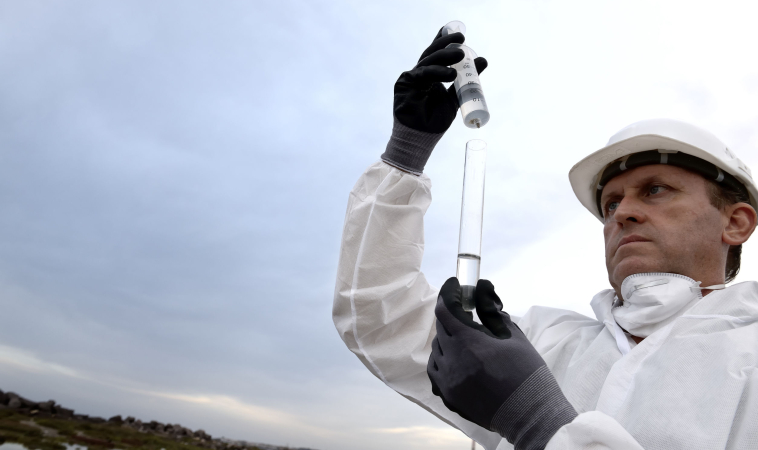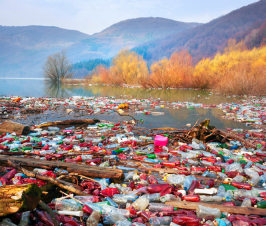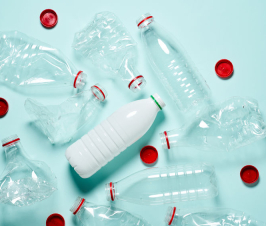Infestation of Microplastic contamination
Microplastics contaminate the world’s surface waters, yet scientists have only just begun to explore their presence in groundwater systems. A new study is the first to report microplastics in fractured limestone aquifers – a groundwater source that accounts for 25 percent of the global drinking water supply.
Microplastic fibers identified in 2 aquifer systems in Illinois
The study identified microplastic fibers, along with a variety of medicines and household contaminants, in two aquifer systems in Illinois. The findings are published in the journal Groundwater.
Plastic in the environment
“Plastic in the environment breaks down into microscopic particles that can end up in the guts and gills of marine life, exposing the animals to chemicals in the plastic,” said John Scott, a researcher at the Illinois Sustainable Technology Center and study co-author. “As the plastics break down, they act like sponges that soak up contaminants and microbes and can ultimately work their way into our food supply.”
Groundwater flows through the cracks and voids in limestone, sometimes carrying sewage and runoff from roads, landfills and agricultural areas into the aquifers below, Scott said.
Researchers collected 17 groundwater samples from wells and springs
The researchers collected 17 groundwater samples from wells and springs – 11 from a highly fractured limestone aquifer near the St. Louis metropolitan area and six from an aquifer containing much smaller fractures in rural northwestern Illinois.
All but one of the 17 samples contained microplastic particles, with a maximum concentration of 15.2 particles per liter from a spring in the St. Louis area, the study reports. However, deciphering what that concentration means is a challenge, Scott said. There are no published risk assessment studies or regulations.
Findings
The researchers did find, however, that concentrations from their field areas are comparable to those of surface water concentrations found in the rivers and streams in the Chicago area, said Samuel V. Panno, an Illinois State Geological Survey researcher and lead author of the study.
“The research on this topic is at a very early stage, so I am not convinced we have a frame of reference to state expectations or bounds on what is considered low or high levels,” said Tim Hoellein, a biology professor at Loyola University Chicago and study co-author. “Our questions are still basic – how much is there and where is it coming from?”
The researchers identified a variety of household and personal health contaminants along with the microplastics, a hint that the fibers may have originated from household septic systems.
“Imagine how many thousands of polyester fibers find their way into a septic system from just doing a load of laundry,” Scott said. “Then consider the potential for those fluids to leak into the groundwater supply, especially in these types of aquifers where surface water interacts so readily with groundwater.”
Monumental amount of work remains
There is still a monumental amount of work to be done on this subject, Scott said. He anticipates that microplastic contamination in both surface water and groundwater will be a problem for years to come.
“Even if we quit plastics cold turkey today, we will still deal with this issue for years because plastic never really goes away,” Scott said. “It is estimated that 6.3 billion metric tons of plastic waste have been produced since the 1940s, and 79 percent of that is now in landfills or the natural environment. To me, it is such a weird concept that these materials are intended for single use, yet they are designed to last forever.”
From Illinois Sustainable Technology Center
 Razi Berry is the founder and publisher of the journal Naturopathic Doctor News & Review that has been in print since 2005 and the premier consumer-faced website of naturopathic medicine, NaturalPath. She is the host of The Natural Cancer Prevention Summit and The Heart Revolution-Heal, Empower and Follow Your Heart, and the popular 10 week Sugar Free Summer program. From a near death experience as a young girl that healed her failing heart, to later overcoming infertility and Chronic Fatigue Syndrome and Fibromyalgia through naturopathic medicine, Razi has lived the mind/body healing paradigm. Her projects uniquely capture the tradition and philosophy of naturopathy: The healing power of nature, the vital life force in every living thing and the undeniable role that science and mind/body medicine have in creating health and overcoming dis-ease. Follow Razi on Facebook at Razi Berry and join us at Love is Medicine to explore the convergence of love and health.
Razi Berry is the founder and publisher of the journal Naturopathic Doctor News & Review that has been in print since 2005 and the premier consumer-faced website of naturopathic medicine, NaturalPath. She is the host of The Natural Cancer Prevention Summit and The Heart Revolution-Heal, Empower and Follow Your Heart, and the popular 10 week Sugar Free Summer program. From a near death experience as a young girl that healed her failing heart, to later overcoming infertility and Chronic Fatigue Syndrome and Fibromyalgia through naturopathic medicine, Razi has lived the mind/body healing paradigm. Her projects uniquely capture the tradition and philosophy of naturopathy: The healing power of nature, the vital life force in every living thing and the undeniable role that science and mind/body medicine have in creating health and overcoming dis-ease. Follow Razi on Facebook at Razi Berry and join us at Love is Medicine to explore the convergence of love and health.

















